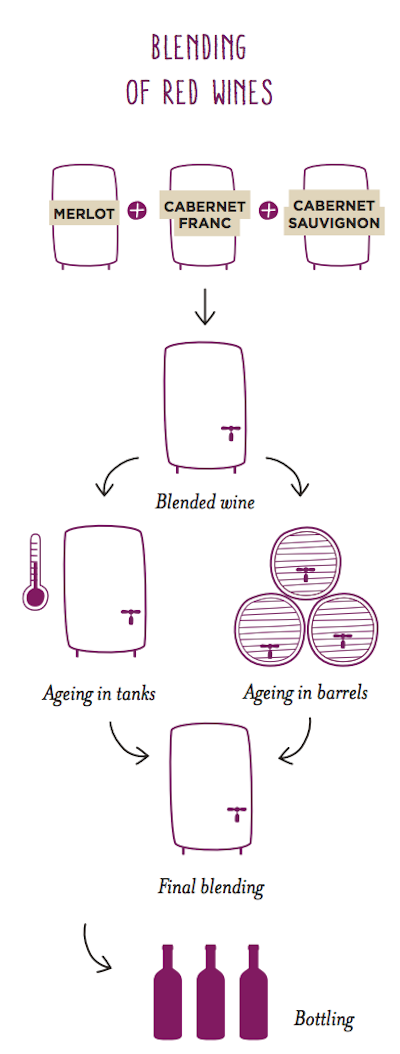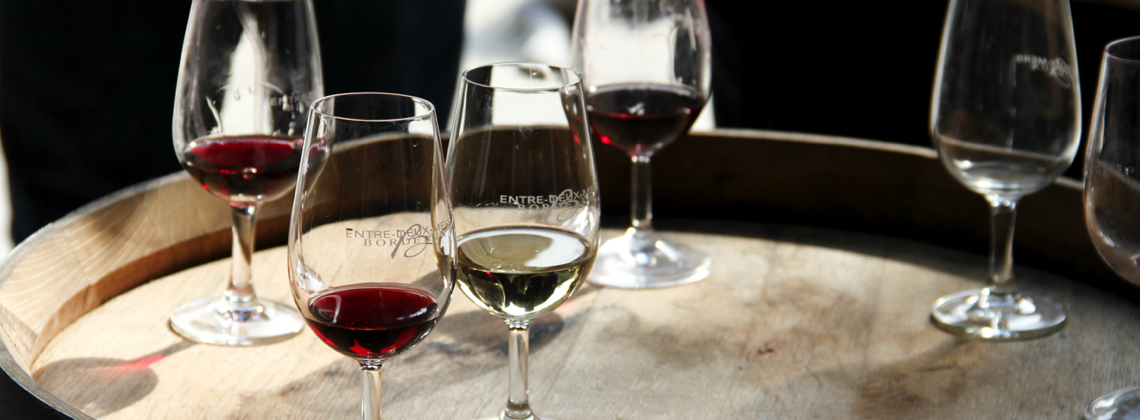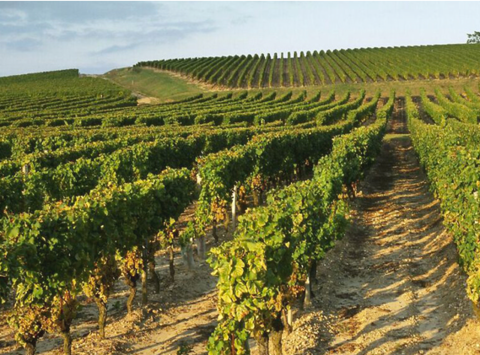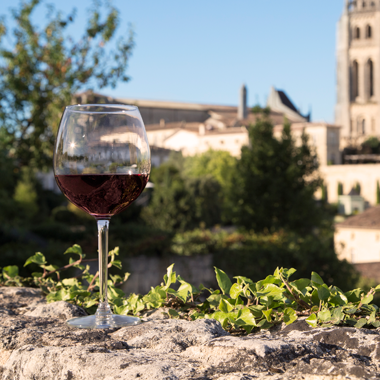Bordeaux 101
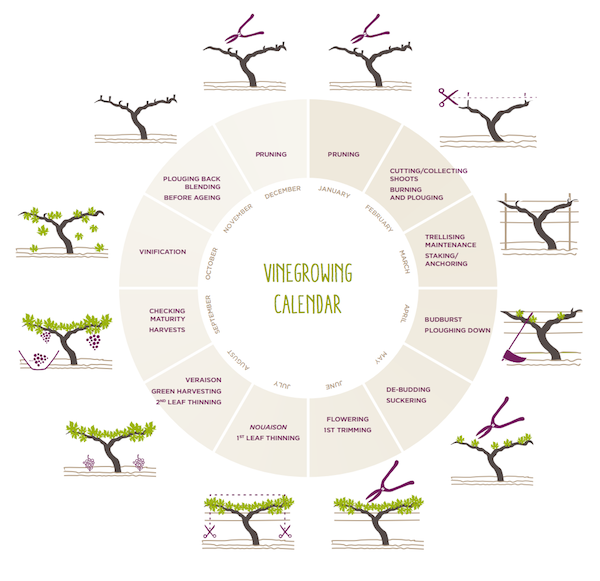
It’s also one of the most exciting periods of the year as it reveals the beginning of buds that will flourish into a brand new crop to be harvested come autumn. Once sorted, the grapes will go through a process of vinification as seen in the image below. We’re giving you a run down of our Bordeaux wine essentials, such as grapes, assemblage or the ‘art of blending’ and appellations – Bordeaux wine knowledge that will prepare you for the most important and exciting time of the year, harvest!
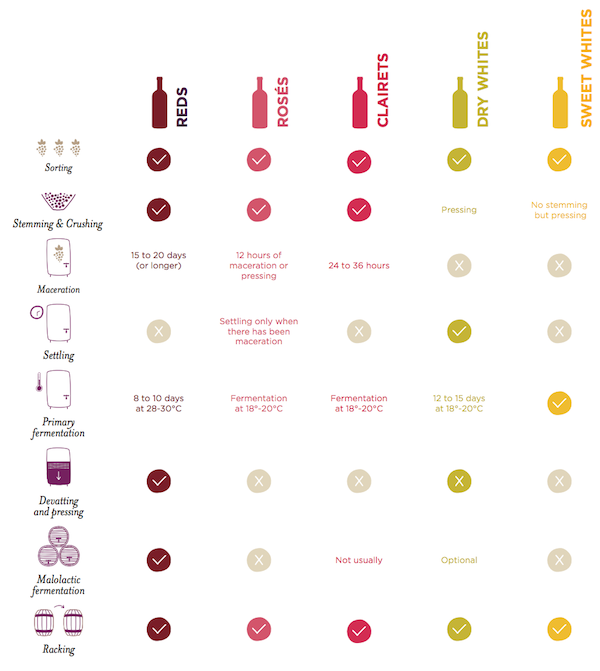
GRAPES:
The predominant grape grown in Bordeaux is Merlot. An early ripening grape, it’s happiest growing in clay soils on both sides of the Garonne River. The grape creates smooth red Bordeaux wines with a rich crimson colour and flavours of red fruits, fig and roasted aromas.
Cabernet Sauvignon is the second most widely planted red grape in Bordeaux. Contrary to Merlot, Cabernet Sauvignon grapes are late ripening and prefer the gravelly soil of the Left Bank that provides optimum weather conditions and temperature for ripening. It possesses flavours of black fruit, liquorice and forest floor aromas when aged.
Cabernet Franc has been planted in Bordeaux since the end of the 18th century and is one of the parent grapes of Cabernet Sauvignon. It is used in the final stage of blending and is principally grown to add finesse, freshness and aromatic complexity with hints of raspberry, violet and a peppery perfume.
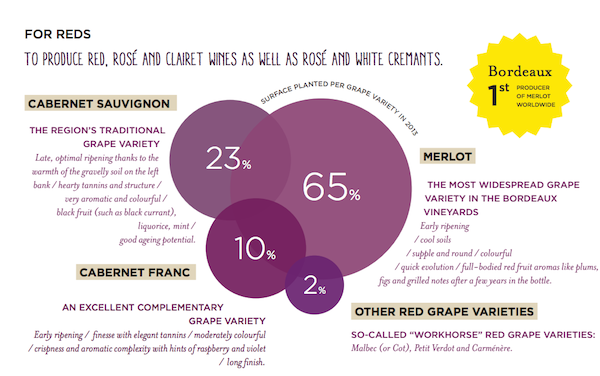
Sauvignon Blanc is the most widely planted white grape in Bordeaux and up until the 1970s it was the widest grown grape, ahead of Merlot before styles in wine changed in Bordeaux. It is the most important grape for dry white wines, possessing the necessary acidity, as well as minerality, aromatic freshness and varietal aromas, such as citrus, boxwood and fig leaves.
Sémillon is the main grape variety for semi-sweet and sweet white wines and is almost always a component of dry white wines. It adds roundness, richness, as well as honey and apricot aromas. When the grapes have been affected by noble rot, they develop an unparalleled sweet bouquet.
Muscadelle can be blended with both dry and sweet white Bordeaux wines, to add musky floral overtones, but it plays a secondary role – usually making up no more than 10% of the final blend.
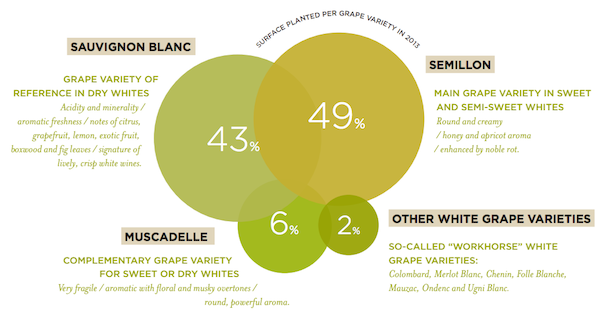
APPELLATIONS:
Bordeaux and Bordeaux Supérieur are the most popular appellations, representing over 50% of the region’s production. They can be produced anywhere in the Bordeaux region and embody the classic Bordeaux style of aromatic complexity and harmonious elegance.Côtes de Bordeaux is produced from wines grown in terroir tucked to the east of the river Garonne – in vineyards with excellent exposure to the sun. Pleasant to drink, the wines possess aromatic notes of ripe fruit and smooth, velvety tannins that are characteristic of this terroir. Cotes de Bordeaux includes the sub-regions Blaye, Bourg, Cadillac, Castillon and Graves.Médoc & Graves span more than 100 miles of terroir on the left bank of the Garonne River. The wines of these vineyards produce full-bodied, powerful and complex red wines with strong aromatic flavours. Many of Bordeaux’s classified wines are produced in the Médoc and Graves.The cluster of appellations, Saint-Émilion, Pomerol and Fronsac are located on the Right Bank of Dordogne River in the Eastern part the Bordeaux region, near the fortified city of Libourne, the wine-making capital of northern Gironde. The vineyards in this region produce supple, aromatic and elegant wines, described as more feminine reds. Sub regions include Canon Fronsac and Montagne Saint-Emilion.Dry white white wines are produced under the appellations of Bordeaux, Côtes de Bordeaux, Graves and Entre-deux-Mers amongst others. They are produced from a blend of Sauvignon and Sémillon and represent over 10% of the vineyard’s production.Sweet white wines include such appellations as Cadillac, Barsac and Sauternes, and are produced from vineyards stretching along both sides of the Garonne, just south of the city of Bordeaux. The different styles of sweet white wines are produced from Sémillon and Sauvignon grapes that have been left to over-ripen or that have been infected with noble rot. The result is a concentration of sugar that creates beautifully aromatic sweet wines.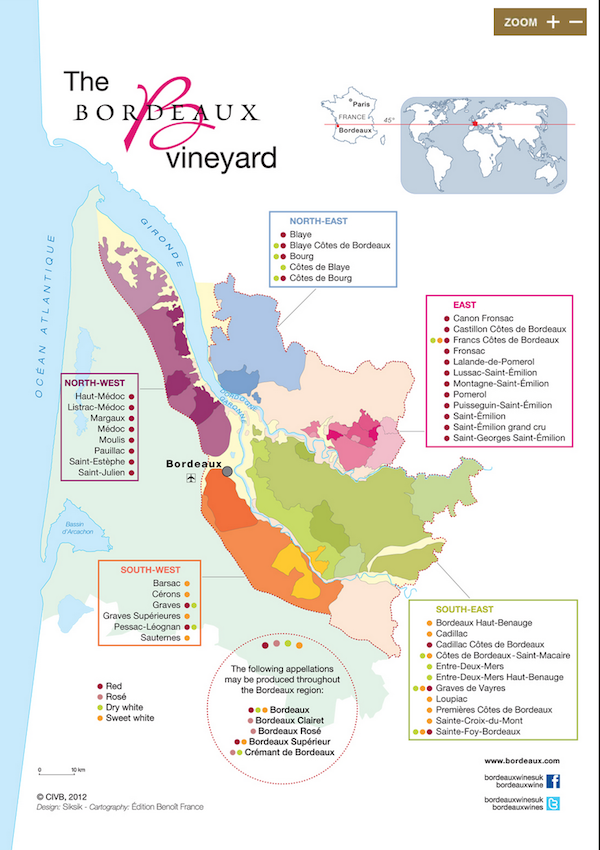
ASSEMBLAGE OR THE ‘ART OF BLENDING’:
Assemblage is characteristic of Bordeaux; a speciality of Bordeaux wines that has often been handed down from generation-to-generation of winemaker. It is what defines the wine and is unique to the region. There’s no timeline when it comes to assemblage or the art of blending, it’s up to the winemakers own discretion and expertise, to decide when the time is right.
Once the wine has been aged in oak barrels, the winemaker will begin blending the juice to create a wine that is unique to the chateau. Much like a chef mixes herbs, spices and flavours to create a great dish, winemakers blend different wines to create the perfect taste and style. For red Bordeaux wines, Cabernet Sauvignon provides tannic structure and Merlot adds softness, roundness and lusciousness. Cabernet Franc is used for freshness, finesse and aromatic complexity, as well as hints of raspberry and violet. For dry white wines Sauvignon Blanc is used for freshness and acidity, while Sémillon is used for roundness and structure, as well as apricot and honey flavours.
